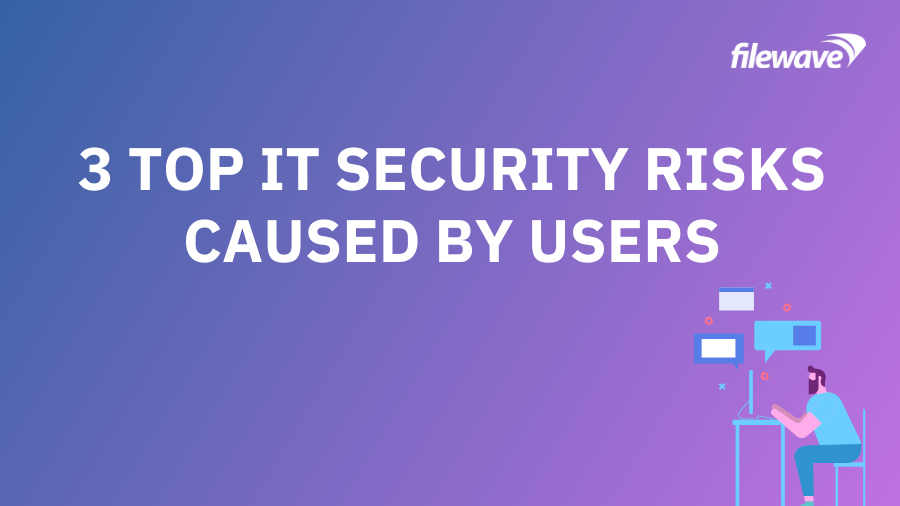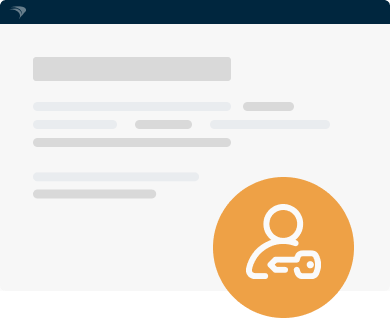Working in IT can be stressful, especially when dealing with user-driven device problems and security issues. So, what does IT wish users knew about their mobile devices?
Understandably, IT comes with a lot of misconceptions from anyone working outside of the department. But here’s a dose of truth: in many cases, employee misuse is the most dangerous element in managing mobile devices. Especially when it comes to data sharing and third-party applications.
So, keep the following info in mind if you want to stay in the good graces of your IT team.
1. Data Sharing Can Be Dangerous
For most businesses, mobile technology and cloud-based data sharing platforms provide a very easy and convenient way to communicate data. And employees no longer need to be in the office to access the work-essential information they need every day. The problems arise when a user circumvents IT’s rules to use their own consumer-grade data sharing solution. While it may be more convenient or feel more familiar, the reality is that often these personal services aren’t designed for enterprise use.
By choosing to use your preferred data sharing product over the company-approved alternative, you’re opening up the business to serious risks and potential security breaches. These solutions aren’t designed to protect the trade secrets and personal customer information hackers find so valuable. So, a consumer-grade data storage system probably didn’t invest in the protections your organization does.
As the line between work and personal life becomes increasingly blurred, enterprise and personal data has understandably grown trickier to separate. Which is why software-driven safeguards such as Unified Endpoint Management (UEM) have skyrocketed in popularity as the Bring Your Own Device movement pushes consumer technologies into the enterprise IT environment.
It’s easy to forget that the data you interact with at work typically requires privacy to ensure not only business success, but legal compliance as well. Whenever it’s being shared is the moment that it becomes most vulnerable. And consumer-grade protections usually aren’t built to fend off the advanced cyberattacks businesses face.
While IT’s restrictions may feel unnecessary or inefficient at times, the worst thing you can do is look for a workaround solution. Because any consequences that result can be disastrous, far-reaching, and – in some cases – permanent.
Most serious data sharing risks:
- Losing sensitive data. Whether intentional or not, exposing your business’ sensitive data is a serious problem. Once an unauthorized party gains access to your data sharing platform, it becomes much more difficult to determine what they’ve accessed and precisely how far private information has been spread.
- Increasing vulnerability to attacks. Anytime a non-approved data storage system asks you to bypass a company firewall or upload/download files, you could very well be opening the floodgates for attackers to take advantage and unleash their worst against your company’s back-end technologies.
- Installing malware. NEVER open risky files – whether you find them in an email or by way of a file-sharing service. One click is all it takes for malware to introduce viruses, spyware, worms, or Trojan horses onto your computer that could potentially comprise the entire corporate network’s integrity.
2. The Threat of Third-Party Apps
Mobile devices and marketplace apps are dominating business strategies everywhere. Digitization and remote work are popular trends that don’t appear to be going anywhere anytime soon. In a corporate environment where customer experience and personalized shopping have become competitive differentiators, enterprises are rushing to incorporate mobile apps into their customer-facing initiatives.
But you’ve used a smartphone for years – and you have your preferences where third-party apps are concerned. You have a preference for emails, for managing calendars and meetings, and for storing general notes. That said, a lot of third-party apps come with mobile security and privacy risks on an enterprise device – therefore making them a major challenge for your IT department.
Here are two consequences that can happen anytime you install a third-party app onto your work device:
Mobile malware
Businesses face more advanced attacks – and more of them – every day. The global threat landscape is evolving too fast for your IT department to consistently keep up with. And you need to be vigilant to help IT protect your device, even if you’re an Apple user. Because hackers are finding ways to get around iOS’s protections through the App Store now.
Network attacks
Downloading a third-party app from the marketplace doesn’t just put your work device in danger – it also makes your organization’s network more vulnerable, too. While most in-office networks are highly secured, the access points you connect to remotely may not be as well-equipped to handle cybersecurity threats. Man-in-the-middle attacks and unsecure Wi-Fi networks can be especially dangerous to anyone using unapproved mobile apps.
3. Evolving threats
As your company adopts new devices and apps, hackers have changed the techniques they’ve traditionally relied upon to find the valuable data they desire. Third-party apps play an important role in these next-gen efforts by introducing a weak link into IT’s cybersecurity chain – giving them an easier entry point into systems they shouldn’t be able to crack. Malicious actors target apps that access trusted services that handle employee information, strategic business plans, and customer transaction data.
Some of these advanced and automated techniques include:
- Exploiting mobile devices through insecure API access
- Stealing sensitive information from app caches that don’t implement extensive security measures
- Gaining unauthorized access of developer keys and credentials through social engineering
Best Practices for Mitigating User-Induced Risks
To mitigate the user-induced IT security risks associated with the threads mentioned above, organizations must implement best practices and strategies that prioritize both security and usability. An effective approach involves a combination of employee training, access controls, and well-defined cybersecurity policies.
- Employee Training for Security: Educating employees about the risks associated with their actions is paramount. Regular security awareness training sessions can empower employees to recognize phishing attempts, create strong passwords, and adhere to security protocols. Training instills a culture of responsibility, ensuring that employees become proactive in safeguarding sensitive data.
- Access Control Strategies: Implementing robust access controls is essential to restrict unauthorized access to critical systems and data. Role-based access control (RBAC) and the principle of least privilege (POLP) can limit users’ access rights to only what is necessary for their job roles, minimizing the potential for data exposure due to user actions.
- Cybersecurity Policy Implementation: Well-defined cybersecurity policies provide a framework for secure behavior within the organization. Policies should cover aspects such as data handling, acceptable device usage, and incident reporting procedures. Regularly reviewing and updating these policies ensures that they remain aligned with evolving security threats and technology advancements.
Key takeaways
User-driven security breaches pose significant challenges for modern businesses operating in a digital world. While mobile technology and cloud-based platforms have revolutionized the way we work, the misuse or bypassing of IT protocols by employees can lead to severe consequences.
Protecting a mobile device isn’t IT’s job – it’s everybody’s responsibility to keep technology safe. See how easy it is to manage mobile devices with FileWave.


